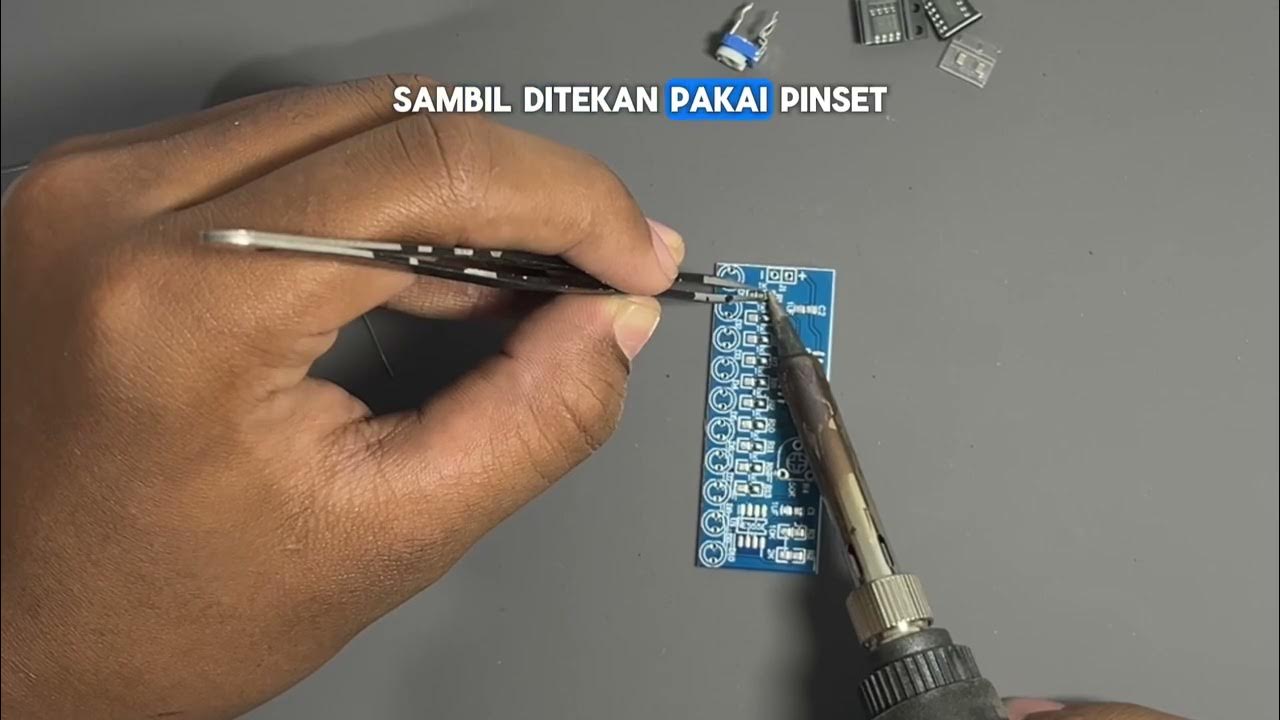Soldering Tutorial for Beginners: Five Easy Steps
Summary
TLDRThis beginner electronic soldering tutorial breaks down the soldering process into five easy steps. Viewers learn about essential tools like soldering irons and tips for maintaining clean soldering surfaces. The tutorial emphasizes the importance of using the correct temperature, keeping components steady, and applying solder properly to ensure strong connections. Common mistakes are highlighted, such as improper solder application and misalignment of components. The video concludes with encouragement for practice and engagement, inviting viewers to ask questions and subscribe for more tutorials.
Takeaways
- 🔧 Always wear safety goggles when soldering to protect your eyes.
- 🌡️ Set your soldering iron to 600-700°F (315-370°C) for standard components.
- 📏 Use helping hands or tape to secure components in place before soldering.
- 🧽 Clean the tip of your soldering iron regularly to ensure good heat transfer.
- ⚗️ Use fresh solder with rosin core for reliable connections.
- 🔥 Heat the joint evenly and apply solder to the joint, not the tip of the iron.
- 🌋 A good solder joint should have a smooth, shiny volcano shape.
- ✂️ Trim the leads of components after soldering if necessary.
- 🚫 Avoid using a blob of solder on the iron; this can lead to poor connections.
- 💡 Ensure components are flush against the board before starting to solder.
Q & A
What are the essential tools needed for electronic soldering?
-You'll need a soldering iron, a cleaning tool for the tip (like a wet sponge or brass sponge), solder, and optionally, a pair of helping hands.
What safety precautions should beginners take when soldering?
-Beginners should wear safety goggles to protect their eyes from solder splashes and should be cautious as solder can be very hot, with a melting temperature nearly twice that of boiling water.
What temperature range is recommended for soldering most components?
-For soldering most components on a circuit board, a temperature between 600 and 700 degrees Fahrenheit (315 to 370 degrees Celsius) is recommended.
How can you keep components in place while soldering?
-You can use helping hands, bend the leads of through-hole components into a V-shape to secure them, or use tape for components with short leads.
Why is it important to clean the tip of the soldering iron?
-Cleaning the tip removes oxidation and excess solder, which ensures better heat transfer and helps make reliable solder joints.
What role does rosin play in soldering?
-Rosin acts as a flux in solder, helping to clean the surfaces of the metals being joined, which allows the solder to adhere properly.
What is the correct technique for applying solder?
-Heat the joint evenly, apply solder to the joint—not the iron tip—and ensure good contact between the iron's tip and the joint.
How can you tell if you made a good solder connection?
-A good connection should have smooth, shiny solder that adheres to both surfaces, and the joint should resemble a volcano shape.
What are common mistakes to avoid when soldering?
-Common mistakes include applying a blob of solder to the iron and trying to transfer it, holding the joint taut, and failing to ensure components are flush against the board.
What should you do after completing a solder joint?
-After soldering, remove the solder first, then the iron, and allow the joint to cool without disturbing it.
Outlines

This section is available to paid users only. Please upgrade to access this part.
Upgrade NowMindmap

This section is available to paid users only. Please upgrade to access this part.
Upgrade NowKeywords

This section is available to paid users only. Please upgrade to access this part.
Upgrade NowHighlights

This section is available to paid users only. Please upgrade to access this part.
Upgrade NowTranscripts

This section is available to paid users only. Please upgrade to access this part.
Upgrade NowBrowse More Related Video

5 MISTAKES that DESTROY the tip of your SOLDERING IRON!

Beginner how to Solder

Electronic Soldering Instruction - Heathkit

Cara Menyolder SMD Menggunakan Solder Biasa Tanpa Mesin

DIY101: HOW TO USE A SOLDERING IRON

Learn How to Solder - a How to Guide with Equipment Recommendations - Repair Your Game Consoles!
5.0 / 5 (0 votes)